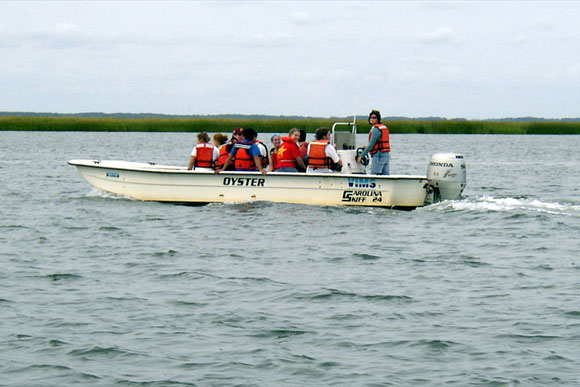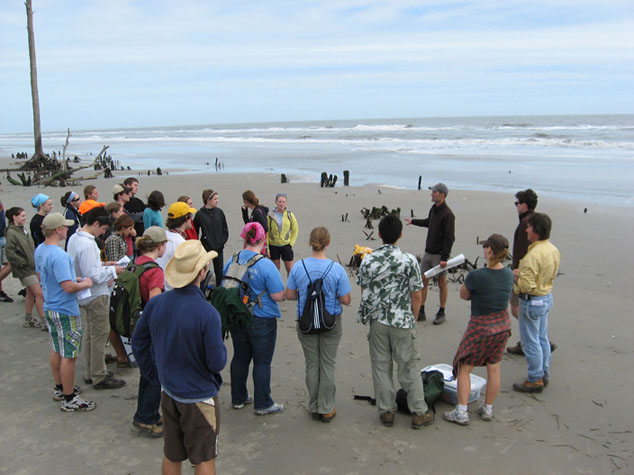Fall 2009- Wachapreague, on the Eastern Shore
The setting was a cool fall morning in Wachapreague, Virginia. Twenty-five students and five faculty boarded flat-bottomed boats at sunrise to see what critters live in the bottom waters of the salt marsh lagoons and see the results of major coastal erosion of barrier islands. The Fall Department Field Trip was to the Virginia Institute of Marine Sciences Eastern Shore Laboratory.
Our morning began with dredging the salt marsh bottom. What did we find? Spiny sea urchins, starfish, clams, sponges, sea squirts, whelks, bryozoans, sea slugs and polychaete worms. They were alive and healthy. Most of the students had never touched living organisms such as these that are usually seen as photographs in paleontological and biological textbooks.
Our next stop was to Cedar Island, a barrier island that constantly changes shape. The previous winter nor’easter moved sand away from the beach and dumped it toward the mainland into the salt marsh. Houses once on shore are now lifeless forms in the ocean. We learned it isn’t wise to build on barrier islands because they are constantly on the move.

Our last stop was Parramore Island with linear dunes and mature trees. A sandy path leads from the leeward side of the island to the windy ocean side. This island’s beach erosion rate is about 5m/year. Our goal was to estimate the rate of long shore current on that day to get an understanding of how this island erodes so quickly. How to do that? Three things are needed: a watch, a tape measure and oranges! Throw the oranges in water and they float with the current. A few brave students plunged into the cold Atlantic to retrieve the oranges (not that it was necessary, but fun). It was a great trip for our majors and potential new ones.
 Skip to main content
Skip to main content
